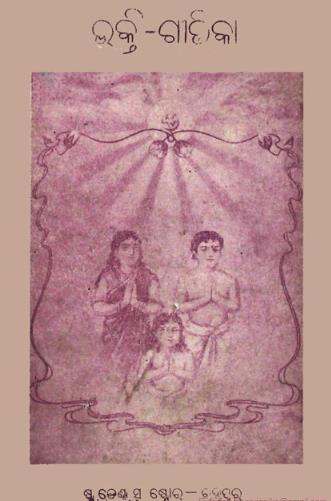Published in 1929, Bhakti Gitika by Rama Chandra Acharya stands as a significant contribution to Odia literature and spiritual poetry. As a prominent figure in the Bhakti movement in Odisha, Acharya’s work reflects his profound devotion and deep connection to the divine. The term Bhakti translates to devotion, and Gitika refers to lyrical poetry, making the title suggestive of a heartfelt expression of love and reverence for God.
At the heart of Bhakti Gitika lies the theme of devotion, which transcends mere religious practice to embrace a more profound, personal connection with God. Acharya employs vivid imagery and emotional depth to convey the intensity of his love for the divine. His poetry often resonates with the struggles and aspirations of the common man, reflecting their quest for spiritual fulfillment amid the challenges of everyday life.
The poems are characterized by their melodious verses, which are not only spiritually uplifting but also musically engaging. Acharya’s use of rhythm and rhyme creates a lyrical quality that enhances the overall reading experience, inviting readers to immerse themselves in the beauty of devotion. His ability to weave personal experiences with universal emotions makes Bhakti Gitika relatable to readers from all walks of life.
Set against the backdrop of early 20th-century Odisha, Bhakti Gitika reflects the socio-cultural dynamics of the time. The era was marked by a resurgence of interest in spirituality and traditional values, as well as an exploration of cultural identity. Acharya’s work aligns with this movement, expressing a longing for spiritual awakening and a return to the core tenets of faith and devotion.
The influence of the Bhakti movement, which emphasized personal devotion to God rather than ritualistic practices, is evident throughout Acharya’s poems. His lyrics celebrate the idea of a loving, caring deity who is accessible to all, breaking down barriers between the divine and the devotee. This core message resonates strongly in Odia culture, where spirituality and community often intertwine.
Acharya’s mastery of the Odia language is evident in his unique stylistic approach, which blends colloquial expressions with classical forms. His use of metaphor and symbolism enriches the text, allowing readers to engage with the deeper meanings embedded within the verses. The simplicity of his language makes the poetry approachable while allowing for profound insight into the nuances of devotion.
The songs within Bhakti Gitika often carry an emotional weight, tapping into the joys, sorrows, and yearnings of the human experience. This emotional depth invites readers to reflect on their own spiritual journeys, making the work not just a collection of poems but an invitation to engage with the divine.
Books Info
| Books name | Bhakti Gitika / ଭକ୍ତି ଗୀତିକା |
| Author | Rama Chandra Acharya |
| No Of pages | 32 |
| Publisher | The Student Store |
| Publication | 1929 |
| Printed At | The Store Press |
| Distributor | NA |

